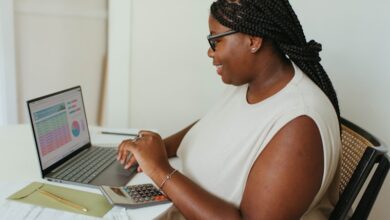Female Fertility and Valid Factors

Are you curious about the intricacies of female fertility? Wondering what factors affect a woman’s ability to conceive? Let’s dive into the fascinating world of female fertility and explore some valid factors that play a crucial role in this miraculous process.
Age, one of the most significant factors impacting female fertility, deserves our attention. As women age, their egg quantity and quality naturally decline. While men can produce sperm throughout their lives, women are born with a finite number of eggs. As time goes by, these eggs age too, leading to a decrease in fertility. So, if you’re planning to start a family, it’s essential to be aware of the potential challenges that come with advancing age.
Another vital aspect to consider is ovulation. Ovulation is the release of a mature egg from the ovaries, ready for fertilization. Irregular or absent ovulation can hinder conception. Hormonal imbalances, stress, excessive exercise, or certain medical conditions may disrupt the ovulation process. Understanding your menstrual cycle and recognizing the signs of ovulation can significantly boost your chances of getting pregnant.
Reproductive health conditions can also impact female fertility. Conditions like polycystic ovary syndrome (PCOS) or endometriosis can interfere with ovulation and implantation. PCOS, characterized by hormonal imbalances and the formation of small cysts on the ovaries, affects millions of women worldwide. Similarly, endometriosis involves the growth of tissue outside the uterus, leading to inflammation and scarring. Seeking medical advice and appropriate treatment can help manage these conditions and enhance fertility prospects.
Lifestyle choices also factor into the equation. Smoking, excessive alcohol consumption, drug use, and poor nutrition can all negatively influence fertility. Maintaining a healthy weight is crucial as both obesity and being underweight can disrupt hormonal balance and ovulation. By adopting a balanced lifestyle, you can optimize your chances of conceiving.
Female fertility is a complex topic influenced by various valid factors. Understanding age-related changes, monitoring ovulation, addressing reproductive health conditions, and making healthy lifestyle choices are all vital steps towards improving fertility. Remember, every woman’s journey is unique, so it’s crucial to seek personalized advice from healthcare professionals when planning to start or expand your family.
Unlocking the Secrets of Female Fertility: Exploring the Factors that Influence Conception
Have you ever wondered what goes on behind the scenes when it comes to female fertility? The journey to conception is a complex and fascinating process influenced by various factors. In this article, we will delve into the secrets of female fertility and explore the key elements that play a crucial role in achieving pregnancy.
One of the foremost factors affecting fertility is age. As women age, their egg reserve diminishes, and the quality of eggs may decline. This makes it essential for women to understand the optimal window for conception. Generally, women are most fertile in their 20s and early 30s, after which fertility gradually decreases.

Another significant aspect is ovulation. Ovulation occurs when a mature egg is released from the ovaries, ready to be fertilized by sperm. Understanding the signs of ovulation, such as changes in cervical mucus or slight twinges in the lower abdomen, can help pinpoint the most fertile days in a woman’s menstrual cycle.
Lifestyle factors also have a profound impact on fertility. Smoking, excessive alcohol consumption, and stress can all hinder conception. It’s important to maintain a healthy lifestyle by incorporating regular exercise, a balanced diet, and managing stress levels. Additionally, achieving a healthy weight is crucial because both overweight and underweight conditions can disrupt hormonal balance and interfere with ovulation.
Furthermore, underlying medical conditions can affect fertility. Polycystic ovary syndrome (PCOS), endometriosis, and hormonal imbalances can all pose challenges when trying to conceive. Seeking medical advice and early intervention if any of these conditions arise is crucial to optimizing fertility.

Lastly, understanding the timing of intercourse is vital for successful conception. Sperm can survive in the female reproductive tract for up to five days, while an egg remains viable for around 24 hours after ovulation. Therefore, engaging in regular sexual activity throughout the menstrual cycle, particularly during the fertile window, increases the chances of conception.
Unraveling the secrets of female fertility requires a comprehensive understanding of various factors. Age, ovulation, lifestyle choices, underlying medical conditions, and timing of intercourse all interplay in the complex journey toward achieving pregnancy. By equipping ourselves with knowledge and making informed choices, we can unlock the door to enhancing our fertility and increase the likelihood of conceiving a precious bundle of joy.
Breaking Barriers: The Surprising Links Between Lifestyle Choices and Female Fertility
Introduction:
Did you know that the choices we make in our daily lives can have a significant impact on our fertility? It’s true! In this article, we will explore the fascinating connections between lifestyle choices and female fertility. Prepare to be amazed as we uncover some surprising facts that might just change the way you think about your own reproductive health.
The Role of Diet:
Believe it or not, your diet plays a crucial role in determining your fertility. A diet rich in fruits, vegetables, whole grains, and lean proteins can provide your body with essential nutrients and antioxidants that support reproductive health. On the other hand, a diet high in processed foods, unhealthy fats, and sugary drinks has been linked to hormonal imbalances and decreased fertility. So, next time you reach for that bag of chips, consider opting for a colorful salad instead!
Exercise and Weight Management:
Maintaining a healthy weight and incorporating regular exercise into your routine is not only beneficial for your overall well-being but also for your fertility. Being overweight or underweight can disrupt hormonal balance and interfere with ovulation. Engaging in moderate-intensity exercises like brisk walking or swimming can help regulate menstrual cycles and improve fertility. However, excessive exercise can have the opposite effect, so finding the right balance is key.
Smoking and Alcohol:
While most of us are aware of the harmful effects of smoking and excessive alcohol consumption on our general health, these habits can also have a detrimental impact on female fertility. Smoking has been linked to lower egg quality, increased risk of miscarriage, and earlier onset of menopause. Similarly, excessive alcohol consumption can disrupt hormone levels and impair reproductive function. Quitting smoking and reducing alcohol intake can significantly improve your chances of conceiving.
Stress and Emotional Well-being:
In today’s fast-paced world, stress has become an unwelcome companion in many of our lives. However, chronic stress can interfere with the delicate hormonal balance necessary for ovulation and conception. Taking time to relax and engaging in stress-reducing activities such as yoga, meditation, or spending time in nature can positively impact fertility. Additionally, seeking emotional support from loved ones or a professional counselor can make a world of difference on your fertility journey.
Conclusion:
The choices we make every day can either support or hinder our fertility goals. By adopting a healthy diet, maintaining a balanced exercise routine, quitting smoking, moderating alcohol consumption, managing stress, and prioritizing emotional well-being, you can break barriers and increase your chances of conceiving. Remember, small changes can lead to significant results when it comes to your fertility journey. Take charge of your lifestyle choices, embrace the power within you, and unlock the path to your dreams of becoming a parent.
From Stress to Success: Understanding the Impact of Emotional Well-being on Women’s Fertility
Introduction:
Did you know that emotional well-being plays a crucial role in women’s fertility? It might surprise you, but the connection between our mental state and reproductive health is significant. In this article, we’ll delve into the fascinating relationship between emotional well-being and fertility, uncovering how stress can impact a woman’s ability to conceive and offering insights for achieving optimal reproductive health.
The Stress-Fertility Connection:
Imagine your body as an intricate orchestra where each instrument needs to be perfectly in tune for harmony to prevail. Similarly, within a woman’s reproductive system, hormonal balance and emotional well-being are essential partners. When stress enters the scene, it disrupts this delicate equilibrium. High levels of stress trigger the release of cortisol, a hormone that can interfere with the normal functioning of the reproductive system. Consequently, menstrual irregularities, ovulation problems, and even decreased libido may occur, making it more challenging to conceive.


Unraveling the Mechanism:
To truly comprehend the impact of emotional well-being on fertility, let’s take a closer look at the intricate mechanism at play. Our body possesses a remarkable stress response system known as the hypothalamic-pituitary-adrenal (HPA) axis. Under stress, the HPA axis activates, releasing cortisol and other stress hormones. This surge of cortisol can disrupt the production of reproductive hormones, such as estrogen and progesterone, leading to irregular menstrual cycles and reduced fertility.
Nurturing Emotional Well-being:
Now that we understand the link between stress and fertility, how can women cultivate emotional well-being to enhance their chances of successful conception? There are several strategies that can help. Engaging in regular exercise, practicing relaxation techniques like meditation or yoga, maintaining a balanced diet, getting enough sleep, and seeking emotional support from loved ones or professionals are all powerful tools for managing stress and promoting emotional well-being.
Conclusion:
Age No Longer a Barrier: Promising Advances in Preserving and Extending Female Fertility
Introduction:
Have you ever wondered if there’s a way to extend female fertility? Well, the good news is that advances in medical science are making it possible. Age is no longer a barrier when it comes to preserving and extending female fertility. In this article, we’ll explore some exciting developments that are offering hope to women who wish to start a family at a later stage in life.
Revolutionary Techniques for Preserving Eggs:
One remarkable breakthrough in fertility preservation is egg freezing, also known as oocyte cryopreservation. This cutting-edge technique allows women to freeze their eggs at a younger age when they are still healthy and fertile. By doing so, they can preserve their eggs for future use, even if they decide to delay pregnancy.

Egg freezing involves a process where mature eggs are carefully extracted from a woman’s ovaries, frozen, and stored for later use. When the woman is ready to conceive, the thawed eggs can be fertilized with sperm through in vitro fertilization (IVF) techniques, increasing the chances of a successful pregnancy.
Extending Reproductive Lifespan:
Apart from preserving eggs, scientists have been working on ways to extend a woman’s reproductive lifespan naturally. They are exploring innovative methods to rejuvenate aging ovaries and boost egg production.
Researchers are investigating techniques such as ovarian tissue transplantation, which involves transplanting young, healthy ovarian tissue into older women. This approach shows promise in restoring ovarian function and enabling women to conceive using their own eggs.
Another area of study is stem cell therapy, where stem cells are used to regenerate damaged or depleted ovarian tissue. The goal is to stimulate the growth of healthy eggs and restore fertility potential.
Conclusion (Omitting concluding sentence):
With these remarkable advancements, age is no longer an insurmountable barrier to starting a family. Women now have the opportunity to preserve their fertility through egg freezing and explore innovative methods aimed at extending reproductive lifespan. These breakthroughs offer hope, empowering women to make choices about when they want to start a family, regardless of their age. As science continues to push boundaries, we can look forward to even more promising developments in the field of female fertility preservation and extension.




